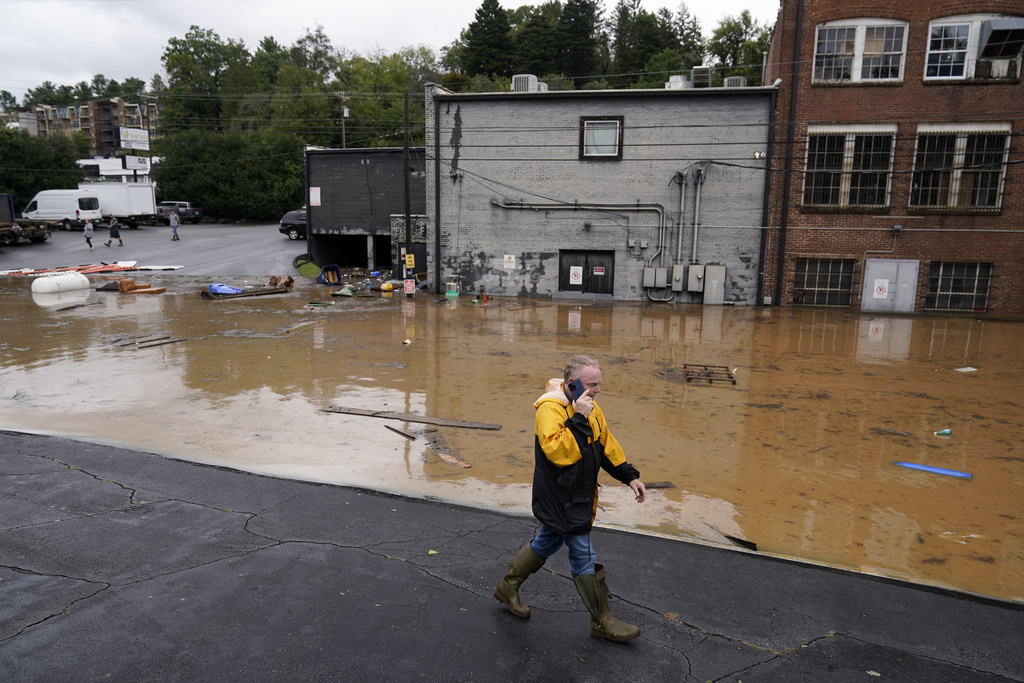Buncombe County Overcounts Helene Deaths, Reduces by 30 \ Newslooks \ Washington DC \ Mary Sidiqi \ Evening Edition \ Buncombe County, home to Asheville, reduced its reported death toll from Hurricane Helene after acknowledging an overcount of 30 deaths. County officials had originally reported 72 deaths but now defer to the state’s official tally of 42 deaths for the area. The error arose from communication challenges and initial misclassifications of fatalities as storm-related. The statewide death toll from Helene now stands at 96, with the Associated Press adjusting its multistate total to 214 deaths.

North Carolina’s Buncombe County Revises Hurricane Helene Death Toll After Overcount: Quick Looks
- Buncombe County Overcount: The county initially reported 72 deaths from Hurricane Helene but has now reduced the number to 42, aligning with state data.
- Statewide Impact: North Carolina’s statewide death toll from the storm stands at 96, according to state officials, after reviews by the Office of the Chief Medical Examiner.
- Causes of Error: Communication disruptions and misclassification of deaths contributed to the overcount, as the county adjusted its figures in the aftermath of the storm.
- Multistate Death Toll: With Buncombe County’s revised numbers, the Associated Press updated the total number of deaths across multiple states due to Helene to 214.
Deep Look:
Buncombe County, North Carolina, home to the city of Asheville, announced on Tuesday that it had significantly overcounted the number of deaths attributed to Hurricane Helene, reducing the reported toll by 30 people. In an official statement, the Buncombe County Sheriff’s Office acknowledged that it had originally provided an inflated figure of 72 deaths, a number widely reported in early October. After further investigation, the county is now aligning with the state’s tally of 42 storm-related deaths.
The error traces back to an October 3rd news release in which Buncombe County officials announced the higher death toll, citing numbers provided by Sheriff Quentin Miller during a media briefing. However, state officials, relying on comprehensive reviews conducted by the Office of the Chief Medical Examiner in Raleigh, have consistently reported a lower death count for the county. The state’s number for Buncombe County has stood at 42 since October 10th, leading to a discrepancy between local and state figures.
On Tuesday, the Buncombe County Sheriff’s Office issued a statement through Public Information Officer Christina Esmay, explaining the reasons for the overcount. The statement highlighted a combination of factors, including challenges with communication following widespread power and cell service outages across multiple mountain counties, as well as difficulties in determining the exact causes of death in the chaotic days following the hurricane.
“In the early aftermath of Hurricane Helene, all deaths were being classified as storm-related and from Buncombe County,” the statement read. “However, as days progressed, BCSO was able to identify who had passed away due to the hurricane, who was actually from Buncombe County, and who passed away from other causes. Compounded with the lack of consistent communication due to widespread outages, the Buncombe County fatality number initially provided to Sheriff Miller has decreased.”
While the county has not provided further details on how it arrived at its original tally, it has deferred further questions about death investigations and official counts to state officials. Sheriff Quentin Miller has not commented directly on the matter, though a spokesperson indicated that his office is looking into his availability for interviews.
State-Reviewed Fatalities
The process for determining storm-related deaths in North Carolina typically involves a thorough review by the state’s Office of the Chief Medical Examiner, which classifies and confirms fatalities before adding them to the official death count. This procedure has been in place for years and was followed during the aftermath of Hurricane Helene. However, in the chaotic days following the storm, several counties independently reported death tolls, leading to discrepancies in numbers.
State officials have continued to update their figures as the review process has progressed. While Buncombe County initially reported 72 deaths, the state’s tally for the county has consistently remained at 42, a number that has not changed since early October. The state’s Department of Health and Human Services (DHHS) spokesperson Kelly Haight Connor stated earlier this week that all storm-related deaths in the mountains had been examined and accounted for but could not entirely rule out future updates.
The discrepancy in Buncombe County highlights the difficulty of accurately assessing storm-related fatalities in the immediate aftermath of a disaster, particularly in areas where infrastructure has been severely affected. The widespread communication outages following Hurricane Helene, coupled with the challenges of determining precise causes of death, contributed to the initial overreporting of fatalities.
Adjustments Across the State
Buncombe County is not the only area in North Carolina where storm-related deaths were initially overreported. Henderson County, which had previously reported two more deaths than the state’s official tally, also revised its numbers on Tuesday, bringing its total in line with the state’s data.
According to state records, North Carolina’s overall death toll from Hurricane Helene now stands at 96. With these revisions, the Associated Press has adjusted its multistate death tally, which had previously included Buncombe County’s inflated figures. The AP now reports a total of 214 deaths attributed to Helene across multiple states, down from the 246 deaths reported earlier in the week.
Hurricane Helene’s Impact and Ongoing Recovery
Hurricane Helene, which struck the southeastern United States in early October, left a trail of devastation across several states, with North Carolina bearing the brunt of the damage. The storm caused widespread flooding, wind damage, and power outages that affected millions of residents. In the mountainous regions of western North Carolina, heavy rainfall led to flash floods, mudslides, and road closures, complicating rescue and recovery efforts in rural areas.
The aftermath of the storm has been marked by an intense recovery process, as state and local authorities work to repair infrastructure and restore services to affected communities. The revision of death tolls in Buncombe and Henderson counties underscores the challenges local officials faced in assessing the storm’s true impact in the immediate aftermath.
The process of accurately tallying storm-related fatalities often involves careful coordination between local and state agencies, with medical examiners playing a critical role in determining the exact causes of death. As of now, North Carolina’s official death toll from Helene stands at 96, though officials have indicated that the number could increase if additional storm-related fatalities are discovered.
Conclusion
The correction of Buncombe County’s death toll from Hurricane Helene brings the official figures closer to the state’s tally, highlighting the complexities involved in accurately reporting storm-related fatalities. As recovery efforts continue, the revised numbers reflect a more accurate picture of the storm’s human toll, while also illustrating the logistical challenges faced by local authorities in the wake of such a large-scale disaster.







